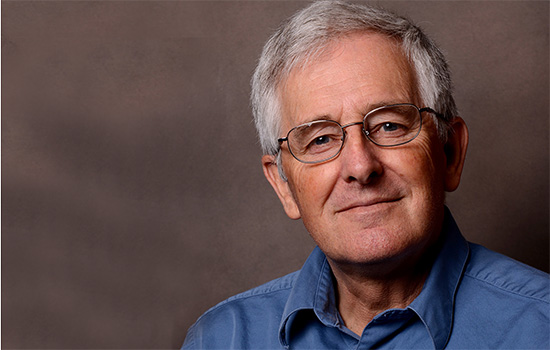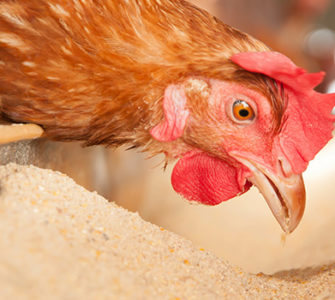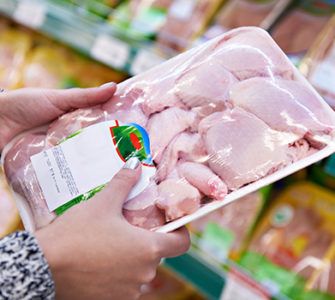How ionophores control coccidiosis
by H. David Chapman, PhD
University Professor
Department of Poultry Science
University of Arkansas
For more than 40 years, the broiler industry has used ionophores to manage coccidiosis, a widespread disease caused by parasites of the genus Eimeria that occur widely in poultry flocks.1 The first ionophore to be used for this purpose was monensin. It was introduced in 1971 and found to be extremely effective against all species of Eimeria that infect the fowl. Monensin was followed by lasalocid, narasin, salinomycin and semduramicin, which are other ionophores that have a similar mode of action.
Technically, ionophores are antibiotics because they are produced as a by-product of bacterial fermentation. An important distinction, however, is that ionophores are unrelated to the antibiotics used to increase the rate of weight gain and improve feed efficiency. Ionophores are not used in human medicine and, therefore, cannot contribute to perceived issues relating to drug resistance in man.
Ionophores have a fascinating and unique mode of action against coccidia that differs from the synthetic drugs (commonly known as chemicals) that are used to control coccidiosis.2,3 Ionophores kill the parasite before it is able to infect the bird.
Transmission stage
The transmission stage for coccidia is the oocyst, a microscopic, egg-shaped cyst that can survive in poultry litter.
The oocyst has an outer wall that protects the parasite within from chemical attack and microbial degradation. Each oocyst contains four sporocysts that also are surrounded by a resistant wall — and within each sporocyst there are two motile stages known as sporozoites. Sporozoites (Figure 1) are capable of penetrating and eventually destroying the intestinal cells of the bird.

Figure 1. The banana-shaped sporozoite contains an enzyme in the membrane (shown as a red circle) that operates the sodium pump, which pumps out sodium ions (Na+).
Following ingestion, which usually occurs when birds peck at litter, oocysts are crushed in the gizzard and release undamaged sporocysts. Digestive enzymes then liberate the sporozoites into the lumen of the intestine. The lumen is a hostile environment and to survive, the sporozoites must rapidly find and penetrate epithelial cells. It is during this period that a window is present and ionophores are able to exert their coccidiocidal effect.
Chemical structure
Ionophores are very small molecules and by virtue of their structure, can be selectively taken up and diffused into the outer membrane of the sporozoite (Figure 2).

Figure 2. The ion-carrying ionophore is a mobile molecule that carries sodium ions (Na+) from the gut lumen across the sporozoite membrane. This results in lysis — disintegration of a cell by rupture — of the sporozoite.
To understand their chemical structure, visualize a molecule shaped like a doughnut with an outer layer that confers solubility in the lipid component of the parasite’s membrane (Figure 3). The inner part of the molecule is capable of binding with important ions such as sodium (Na+) and potassium (K+).
The name ionophore provides a clue to its action: ion-pore. Thus, ionophores form a portal, or pore, by which ions can diffuse through the membrane of the parasite and down their concentration gradient.
All cells, including the single-celled sporozoite, contain high intracellular concentrations of K+ and low intracellular levels of Na+. This is essential for normal function in the cells of all animals. To maintain the low levels of Na inside the cell, the membrane is constantly pumping out Na+ ions. This is achieved by an enzyme that functions as a sodium pump.
Short-circuits sodium pump
Once an ionophore is taken up in the membrane of the sporozoite, however, it effectively short-circuits the sodium pump. Thus, as fast as the sodium pump removes Na+, the ionophore allows it to leak back in again. The parasite’s cell responds by continuing to pump out Na+, but eventually runs out of energy. This results in an uncontrollable uptake of water into the sporozoite, which swells up and then bursts (Figure 4).

Figure 4. A sporozoite in the process of being killed by an ionophore. It has many large vacuoles containing water, and bursts.
An important consequence of this mode of action is that ionophores must be present in the gut to be able to kill the sporozoites. Thus, feed restriction should be avoided since it could inadvertently lower the concentration of drug in the intestine. Another significant consequence is that the parasites are destroyed before they can damage host cells. In contrast, synthetic drugs kill during later stages of the parasite’s life cycle that have commenced growth in absorptive intestinal cells.
A third consequence of an ionophore’s unusual mode of action is that it is quite difficult for the parasite to acquire resistance, unlike many other drugs. This partly explains why resistance took such a long time to develop to ionophores, which are still widely used today.
Dr. Chapman is a parasitologist specializing in the study of coccidiosis. He joined the Center of Excellence for Poultry Science at the University of Arkansas in 1990, where he initiated a coccidiosis-control research program. Chapman has published numerous papers on coccidiosis and is widely recognized as an authority in his field.
References
1Chapman, H. D., Jeffers, T. K., and Williams, R.B. (2010). Forty years of monensin for the control of coccidiosis in poultry. Poultry Science 89, 1788-1801.
2Chapman, H. D. (1997). Biochemical, genetic and applied aspects of drug resistance in Eimeria parasites of the fowl. Avian Pathology 26 221-244.
3Smith, C. K. II, and Galloway. R. B. (1983). Influence of monensin on cation influx and glycolysis of Eimeria tenella sporozoites in vitro. Journal of Parasitology 69 666–670.
This article was developed by the author(s) to provide assistance in managing the poultry health subjects discussed. It is not meant to be used, nor should it be used, as an official guide for diagnosing or treating any poultry health conditions. The author(s), Poultry Health Today and the website’s sponsor (Zoetis Inc.) are not liable for any damages or negative consequences from any treatment, action, application or preparation discussed in this article. References are provided for informational purposes only. Poultry antimicrobials, vaccines and other health aids should always be used under veterinary supervision and in accordance with the indications and warnings on the product’s label.
Editor’s note: The opinions and recommendations presented in this article are the author’s and are not necessarily shared by the editors of Poultry Health Today or its sponsor.
Posted on August 15, 2015


















